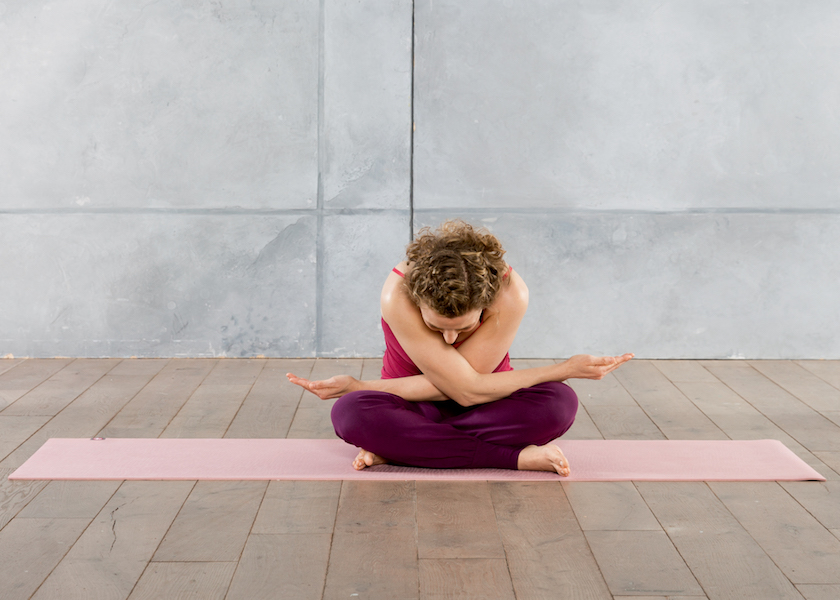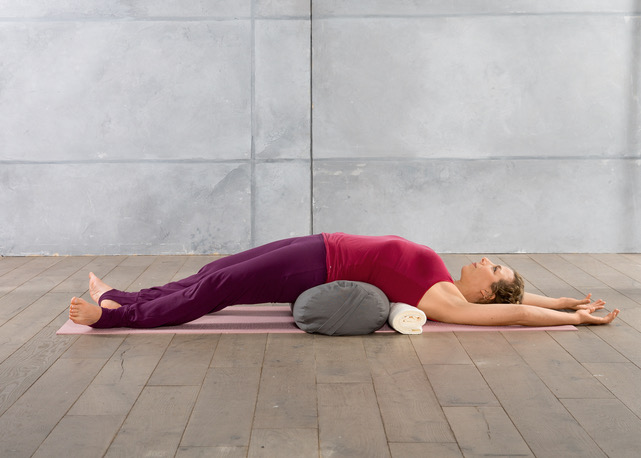View this post on Instagram
My father died suddenly and unexpectedly when he was very young, leaving me traumatized and heartbroken.
Despite many years of practicing yoga, the pain of loss turned my body rigid and hard in just a few weeks.
After grieving intensively, crying a great deal, and taking plenty of time off, I remained deeply shaken by his passing.
It took several weeks until I felt the impulse to take up my Yin yoga practice again, and when I did, it felt as though I had never been on a yoga mat before. My body was limited in its movements, my muscles barely allowed any stretching, and I could feel pain everywhere, particularly in my shoulders and neck.
It took a great deal of patience and small sets of exercises to regain access to my body. Thus, I discovered the hard way the close connection that exists between the emotional and the physical self.
We all experience pain in life. Luckily, just as sorrow can have a profound effect on our bodies, physical practices can help heal emotional wounds. The aim of any yoga method is to bring the body, mind, and spirit into harmony.
Yin yoga especially is a gentle practice that harmonizes the flow of energy, and can, therefore, activate our capacity for self-healing. It directs us to look inward and gives us the peace we need to get in touch with our inner selves. Long, deep stretches, held for minutes without any muscular tension and accompanied by gentle, effortless breathing, provide us with calm so that buried memories and emotions can emerge.
Many of us worry about things that will never happen. Others experience sadness and grief—emotions with real and tangible causes. All of these feelings are immensely important and must be accepted and worked through so that they can be healed.
The body communicates with us constantly, but many of us have forgotten how to listen to it and interpret its signs.
For example, if we experienced emotional damage in childhood, symptoms such as nervousness, anxiety, depressive malaise, or sleep disturbances often appear in adulthood. Although these ailments can be addressed quickly with medicines, the actual causes remain unrecognized and untreated unless we become our own quiet observer and listen carefully to what our body tells us is going on inside. If we identify what is causing us stress, then we can accept it, process it, and ultimately let it go.
Below I have included a short sequence of poses that help me to let go—physically, emotionally, and mentally.
Easy pose with arm and shoulder stretch (Sukhasana)
This position opens up the hips and stretches the whole back, as well as the arms and shoulders.
Come into Easy pose, your right arm crossed in front of the left. To make the position more comfortable, you can also place a cushion under the buttocks and support your knees by raising them.
Bend forward in a relaxed way with a rounded back, and cross your arms so that your right arm is in front of your left arm and the palms are facing upward. Alternatively, you can grip the opposite shoulder.
Then, change the arm position by placing the palms downward on the opposite knees.
Remain in Easy pose for three to five minutes, including both arm positions.
Straighten up again, release the arms and legs, and move to and fro loosely a few times.
Change sides—crossing the left leg in front of the right one, and the left arm in from of the right—and repeat the process.

Rainbow Bridge (Urdhva Dhanurasana)
This position mobilizes the thoracic spine, opens the heart chamber, and stretches the shoulders and insides of the arms.
Place a yoga bolster and a rolled-up blanket straight across the mat.
Lie down with your back on the bolster, which supports your pelvis and lumbar spine. Your shoulder blades are on the blanket, and your arms are placed alongside your head.
If you would like to intensify the stretch, you can extend out your legs, or, for a gentler variant, leave your feet placed on the floor.
Stay in Rainbow Bridge for three to five minutes. Then, either sit up again with activated pelvic floor muscles, or roll to one side out of the position.
Relax into a supine position.

To complete this sequence, you may want to perform the following meditation:
Stillness Meditation
Go into Easy pose. You can close your eyes or leave them open slightly.
Be aware of your body, and do not evaluate anything in doing so, but simply observe. How do you feel in your body today?
Stay like this for a moment and direct your attention to your breath and your breathing. How is your breath flowing?
Then, direct your attention to your mind and observe its activity. How are you feeling at this moment on a mental level?
Now, with each breath, let yourself go more and more, and allow yourself to be immersed in the inner stillness. If thoughts emerge, just take note of them and let them draw away again.
Come back to stillness in yourself.
You might take note of images here, or an inner voice, perhaps emotions, old memories, or experiences. Try not to assess anything, but just perceive it and what it is showing you. Let your meditation take place in stillness, without expecting anything.
Stay in this as long as you wish. Then come back to yourself gently. Feel your breath deepen, slowly open your eyes, and direct your gaze calmly to the floor once again.
When you have finished, ease out of your position.
I’d also like to share another one of my favorite meditations, which I do every night before I go to bed: Yin Chakra Meditation, which cleanses the energies we collect throughout the day. Join me for the meditation here.
~
Poses excerpted from Be Healthy with Yin Yoga: The Gentle Way to Free Your Body of Everyday Ailments and Emotional Stress, by Stefanie Arend (She Writes Press, August 2019).











Read 1 comment and reply